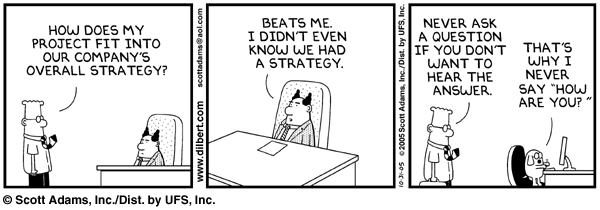Introduction
In the article “IT
Doesn’t Matter”, the author Nicholas Carr presents the viewpoint that although
IT has become the backbone of commerce, it has become more of a commodity and a
cost to business rather than providing strategic sustained competitive advantage.
According to Carr, IT only provides a strategic advantage in the initial stages
to the early adopter companies, but as the technology becomes ubiquitous and
affordable to all, its competitive edge declines. I disagree with Carr’s
viewpoint that as IT becomes increasingly commonplace, companies start to lose
their competitive edge and will present examples to support my viewpoint.
IT’s
ubiquity, ease of access and its impact
According to Carr, as
IT becomes ubiquitous, easily accessible and affordable, companies that adopt
that technology start to lose competitive advantage. However, there are
technologies such as Email and Social media that have distinct advantage in
being ubiquitous and infrastructure technologies rather than proprietary
technologies. The primary advantage of Email technology is the fact that it is universally
adopted for B2B and B2C communication. If a company did not adopt Email, it
would risk losing business to other companies that have Email. Also, I think
that affordability and ease of access to a technology does not necessarily mean
that it is relevant to every company that adopts it. For instance, an Oracle
database is much more affordable and easily available today, but not every
company that deploys an Oracle database will start to see an increase in
profits. It depends on how relevant the technology is to the business and how
effectively it is adopted and used. If a company is able to deploy and use a
technology effectively, it will continue to gain strategic competitive advantage
from that technology even if it is affordable and easily accessible to its
competitors. Social media, for example, has provided a significant boost in
sales to many e-commerce and retail companies such as Amazon by providing an
alternate channel to reach its consumers. However, if a business such as a
Pharmacy, whose majority consumers are elderly people over 60 years of age,
decides to adopt Social media as the latest technology to increase sales, their
efforts would be counterproductive. Also, some companies are able to deploy
standard technologies innovatively. An example that Carr mentions is that of
Ebay and its innovative use of web technologies for Internet auctions, which
has provided Ebay a sustained competitive advantage. So IT can provide
strategic competitive advantage to businesses when it is relevant and
successfully adopted.
Analogy
between IT and Railways
To support his
viewpoint that IT as an infrastructure technology has been commoditized and
lost its strategic advantage, Carr presents analogies between IT and
infrastructure technologies of the early 18th century such as
Railways. Although there is similarity in the fact that both IT and Railways
are transport mechanisms; IT transports data and Railways transport goods; Carr
fails to acknowledge that in addition to transporting data at increasingly remarkable
speeds, IT continues to evolve rapidly and also has tremendous capability to
store and “transform” the data into useful information that has been used for
strategic decision making. It is this ability of IT to transform the data through
report generation tools and decision support systems that continues to provide
strategic competitive advantage to companies like Wal-Mart and Dell that have
been able to secure economies of scale by leveraging their technological
advantages through IT’s data and information processing capabilities.
Carr’s
view on Digital future
According to Carr, the
commoditization of IT has reached to such high levels that companies can no
longer incorporate IT in their business strategy and that this is the “digital
future”. However, I think that IT is continuously evolving and so is the
“digital future”. A few decades ago, when web technology was introduced, many retail
companies had to incorporate ecommerce into their business strategy. Then, with
the advent of smartphones, many companies such as banks had to incorporate
mobile computing into their business strategy. As IT evolves, companies will
need to keep integrating IT into their business strategy as an important
enabler of business.
Conclusion
In conclusion, I think
that IT definitely matters to a business and should not be considered a
commodity or simply a cost to business, but when relevant and deployed
effectively, it is a useful strategic asset that can provide significant
competitive advantage to a company. However, the companies will need to
carefully invest in selected technologies that are relevant to their business
instead of simply following the hype and investing in technologies that are
expensive and provide little return on investment. It is important for
companies to focus on IT as an “enabler” of business; business should drive IT
instead of IT driving the business.
On a lighter note, here's what Dilbert has to say about IT strategy

On a lighter note, here's what Dilbert has to say about IT strategy


No comments:
Post a Comment